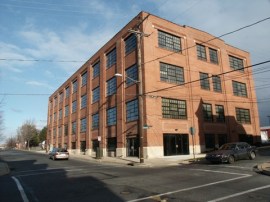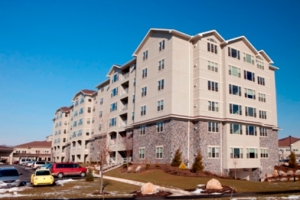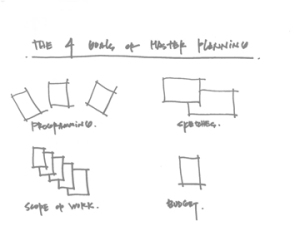- Programming is the process of putting down on paper all of the different functions that an organization would like to have happen within the walls of the facility. It is the transition from the Vision, Dreams, and Needs to actually compiling a list of spaces, their occupancies, and their adjacencies to other spaces.

Lancaster Bible College – Good Shepherd Chapel Renovations
This is a critical step, regardless of how big or small a project, for many reasons:
- It is the first “check and balance” that all of the functions from the Vision planning for the organization are clearly compiled.
- This list can then be a reference during the entire journey of the project.
- This is also the first time that the design professional can add basic function requirements such as rest rooms, janitor rooms, elevators, mechanical rooms, etc. In addition, a formula can be used for an allowance of horizontal and vertical circulation, such as corridors and stair towers.
This is important because all of these rooms and elements require space, and this space adds up…..with regard to actual square footage, cost, and feasibility on the site. The occupancy of each space is also very important as this number should be a “projection” for 5 to 10 years into the future, not present day needs.
If the space is planned for the present, it will be too small once the project is complete or in the very near future, and the project will not be helpful to the organization. It is also imperative to list the required adjacencies for any spaces at this time. These adjacency needs should have been discussed during the Vision planning……and they do not want to be forgotten after sketches begin.
Once the entire Program is complete it is the benchmark for the overall square footage needs as well as code requirements for the different assembly areas. It is also useful to see if the overall squared footage is feasible on the site or within the parameters of the project. This overall Program can also then be analyzed and broken down from the “Master Plan” into “Phases.” Once the Program is reviewed and approved by the organization, it becomes the basis for the Sketches from the design professional…and another step in the journey begins.




 It is extremely helpful for an owner to have a core team together for the duration of a construction project. The makeup of this core team does not necessarily have to be people experienced in the different construction trades.
It is extremely helpful for an owner to have a core team together for the duration of a construction project. The makeup of this core team does not necessarily have to be people experienced in the different construction trades.


